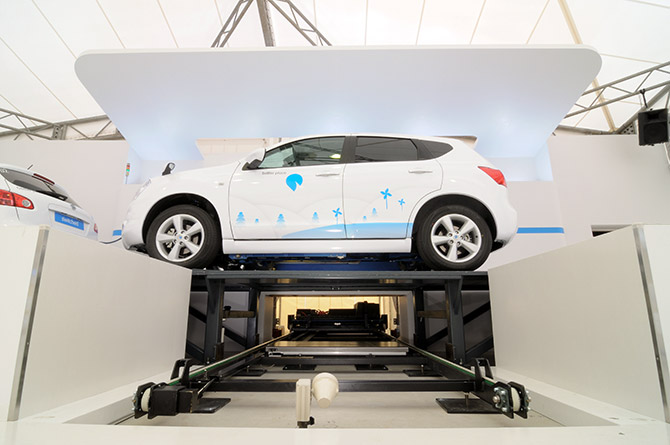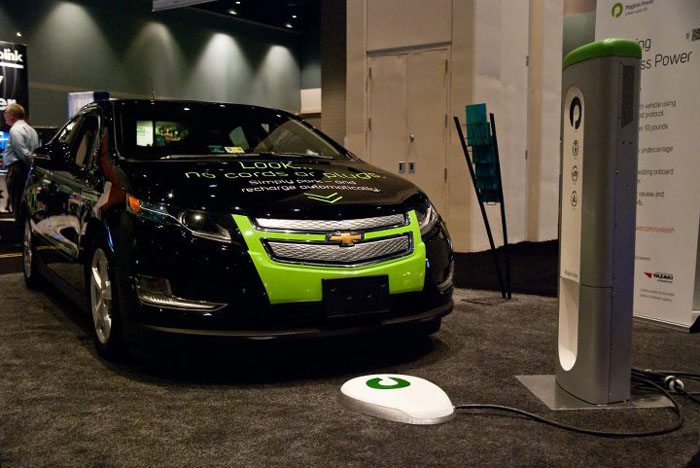Electric Cars: A few sparks short of ignition
Although I’m a huge fan of diesel pickups, electric vehicles (EV’s) have a few characteristics that I really love. EV motors produce maximum torque at low RPM, meaning lightning-quick stoplight launches. They also produce power more quietly than the combustion engine. For everyday driving, that’s a great boon (though I’d still prefer the basso rumble of a V8 on track days).
Despite all their recent hype though, mainstream EV ownership is still a pipe dream. Their short range and limited recharging stations prevents our road-trip loving nation from adopting them wholeheartedly. However, several new technologies could change that in a heartbeat, if all the bugs are worked out.
Quick Swap Batteries
You’re driving down the road and see that your fuel gauge reads empty. You find the nearest gas station and fill ‘er up, then you’re on your merry way again. Why should this be different for EV’s? In 2009, a company called Better Place invented a solution to this problem. Their idea is to build a network of fuel stations with machines that swap out a standardized battery pack. So instead of pulling off after 100 miles to wait 19 hours for a recharge, Better Place will swap in a fully charged battery in three minutes. Rather than paying for gallons of gasoline, the driver would pay for the amount of kilowatt-hours used on the battery. Standardized batteries make sense because batteries are so expensive to manufacture that only a few companies make them anyway – why should they all be using different shapes, sizes and plugs? There is no reason why this concept shouldn’t take off if the infrastructure buildup costs can be overcome.
Wireless Charging
Most EV manufacturers recommend that EV owners install a specialized charging station at home. Given that it takes 19 hours to fully charge a Nissan Leaf on a normal 120V outlet, the 7 hour 220V charger seems like a good idea. The problem is, you have to remember to plug it in at night, and unplug it in the morning. If a special charging station needs to be installed anyway, why should it be a corded system? The technology already exists for cordless charging. A company called Plugless Power is already testing a system for electric cars. They claim that the speed and cost of their system is similar to specialized wall chargers, all while being safer.
It’s stunning that between all the resources of carmakers like Nissan and Toyota, they didn’t think of this idea. In the age of iPhones and WiFi, this should have been the first thing they tried. Keep in mind that wireless charging is based on the theory of electromagnetic induction – a theory that was discovered in 1831. This is not new technology!
On-Road Charging
Following in the footsteps of such an idea, why should a wireless charging solution be stationary? Why can’t inductive charging be used on highways and byways too? Good news, on-the-road inductive charging is a reality. In fact, HaloIPT and the city of London are trying this on the M25 motorway. The charge distributors are placed in the roadway and powered by the electrical grids that bring power to your home. While there may not be enough charging capability to make an electric car go forever, this idea will significantly increase the range of EV’s.
Roadblocks
Considering how few electric cars are on the road today, the elegance and market-readiness of the listed technologies is amazing. There is, however, one massive roadblock that these technologies face: the carmakers! Ford, Toyota, and Fisker have been quick to criticize Better Place’s quick-swap battery idea. They claim that swapping batteries too frequently may cause deterioration of the battery pack seals, which could lead to reliability issues.
Baloney! First, if the battery pack is damaged during the swap, it will be immediately apparent while the consumer is at the swap station – at which point they will wait 3 minutes for another battery pack. Second, why would constantly swapping battery packs have to affect the seals? These battery packs are designed to withstand the stress of being in a moving vehicle going over rough roads. After all that abuse, why would it be an issue for a robot to replace them? Are they planning to make battery cases out of jello? Truth is, the major automakers spent millions developing their own proprietary battery packs and associated connectors. For a small company like Better Place to one-up them with a brilliant idea is a massive smack in the face, not to mention lots of wasted research and development. However, once the automakers start embracing these smart ideas, EV’s will become mainstream in a hurry – and we’ll be there to cover all of them.



